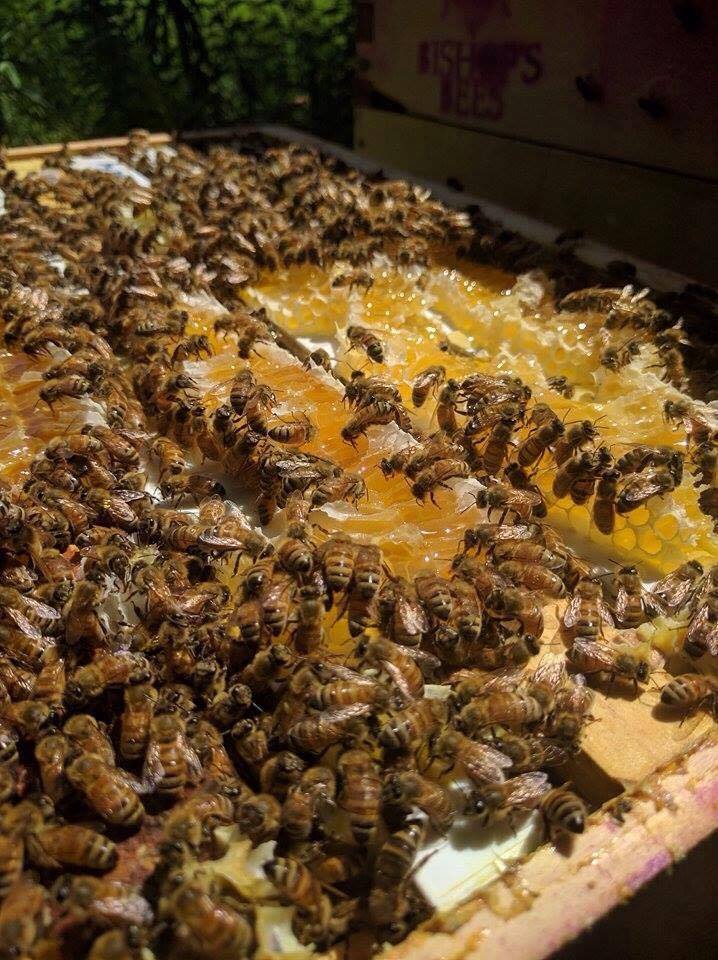Chloe Soucy and André Pritchard are both studying at Bishop’s University, majoring in English and International relations respectively. In their spare time, they manage three purple hives as a part of the Bishop’s Bees Project.
“The health of bees is something that has really come to the national consciousness over the past three or four years” Pritchard said, explaining that concern for the pollinators and for the environment in general was one of the motivating factors behind the initiative in the first place. “I think it’s the issue of our generation.”
Bishop’s Bees is getting ready to start its second season in operation, having been established in the spring of 2016 through the school’s “build a better purple” fund. The project was founded by Soucy with Pritchard taking over leadership of the club when Soucy went on exchange to England last year
“One day I received an email that basically said, “do you have a $3000 idea?” I was really inspired by that,” Soucy said. “At the time I had no experience with bees, I didn’t know anything about bees, I just thought it would be a good idea for our campus.”
Citing the value of Bishop’s tight-knit community, the project founder said that she simply started asking around campus to see if anyone might have experience with bee hives. This process quickly led her to a member of the school’s buildings and grounds team who has hives, and from there to BU Alumnus Nick Melka, who runs the urban apiculture company Miel MTL.
“He’s the one who really set us up with everything we needed,” Pritchard said. “We sponsor the hives and he takes care of them for us.”
“Nick and I made a contract and in the spring of 2016 he helped me get three hives on campus,” Soucy added. “I think Bishop’s is a really good place for it because we’re in a more rural area and ideas like this are really fostered by the community. I figured I should just go for it.”
After getting approval for the idea and getting it off the ground, Soucy left for an exchange, and Prichard took over. After taking over responsibility of the project, he said that he spent the summer working with Miel MTL directly and has learned a great deal about the world of bees and honey production as a result.
“You can just throw a hive down and the bees will do their own thing, what bee keepers do is try to optimize the way that the hive works,” Prichard said, adding that he was surprised by how friendly the bees were. “I was bee keeping all summer and I would wear shorts. People think that they get stung by bees, but actually it’s wasps and other things.”
Given the fact that most of the school year takes place while honey bees are dormant, there is not a lot of work to be done on the project while class is in session, but Prichard explained that the Bishop’s Bees club was founded to actively support the project in the off season.
“The goal is to connect students, and anyone else who is interested, with the save the bees foundation,” he said. After the few weeks of overlap where the bees are still active at the start of the school year, the club works on fundraising and awareness activities to get the student body and broader community engaged in thinking about the bees all year long. The fundraising also helps go into defraying the $800 needed to maintain the hives, although Soucy said that their first year of sales raised close to $1,200, taking some of the pressure off that issue and leaving room for the project to dream about future projects. As the initiative stabilizes, Prichard said that the hope is to invest any profit back into other clubs and projects at Bishop’s, particularly if they have an environmental focus.
“The goal of build a better purple is to reinvest in the community” Pritchard said, with Soucy adding that “the Bishop’s community was really a fundamental factor in the creation of Bishop’s Bees, and the long-lasting effects will feed back into that community.”
The founder said that she was “blown away” by the support the project has been shown in its early days, noting that their honey sold out within two weeks of being put on the shelves in the campus store, Doolittle’s, despite having an $18 price tag for a 320 gram jar.
“It’s a huge collective effort,” Prichard said, likening the success of the project so far to the production of a bee hive, “A single bee will only produce a teaspoon of honey in its entire life, but a hive will produce 60 to 120 pounds of honey per season.”






